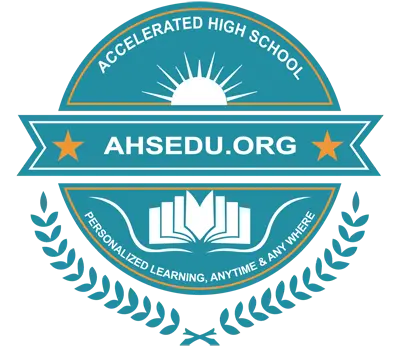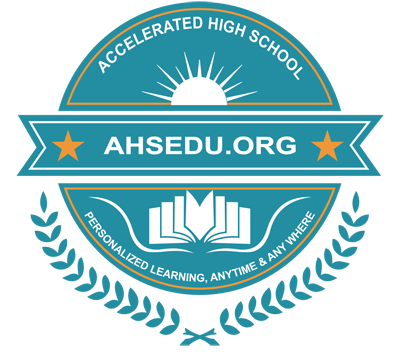Accelerated High School
Standardized Curriculum of Social Studies-V
In our world today, many amazing things are happening because of science and technology. It's important for everyone to learn about them, even kids in Grade 5. When we understand how things work and how to solve problems using evidence, we can think better about the world around us. Then we can help make decisions about important things like how to take care of the Earth, how to stay healthy, and how to fix problems in our communities.
Mission:
All students will acquire the knowledge and skills to think analytically about how past and present interactions of people, cultures, and the environment shape the American heritage. Such knowledge and skills enable students to make informed decisions that reflect fundamental rights and core democratic values as productive citizens in local, national, and global communities.
Vision:
This course is designed to spark curiosity and foster a deeper understanding of the world we live in. Through engaging lessons and activities, students will;
- Explore fundamental concepts such as family dynamics, the roles of community helpers.
- Discuss the significance of various geographical features.
- Understanding the importance of civic rules and laws to mastering the basics of mapping, including cardinal directions.
- Gain valuable knowledge about their surroundings.
- Discover the rich diversity of our planet, from the towering mountains to the vast oceans, with a special emphasis on the majestic Pacific Ocean.
- Learn about the production of goods, the provision of services, and the concepts of needs, wants, buying, trading, and saving.
Spirit and Intent:
The Grade 1 social studies curriculum at AHS is designed in alignment with The New Jersey Student Learning Standards for Social Studies (NJSLS-SS), providing a comprehensive framework for student learning. Our curriculum emphasizes the exploration of fundamental concepts such as community, family, and citizenship, while also fostering critical thinking and inquiry skills.
At its core, the NJSLS-SS emphasizes three essential dimensions: inquiry, concepts, and content. Throughout the curriculum, students are actively engaged in asking questions, conducting investigations, and making connections between key social studies concepts. This inquiry-based approach encourages students to develop a deeper understanding of the world around them and to become active participants in their communities.
Three Dimensions of AHS Science Curriculum:
The performance expectations in social studies reflect the three dimensions and describe what students should know and be able to do. In layman’s terms, they are “the standards.” They are written as statements that can be used to guide assessment and allow for flexibility in the way that students can demonstrate proficiency. The example below is provided to illustrate the interconnected nature of the NJSLS-SS components.
Social Studies Core Idea
|
|
Historical Thinking and Analysis Practice
|
Analyzing Historical Events and their Impact |
Use historical evidence to evaluate the impact of significant events and individuals on society and governance. |
Crosscutting Concept
|
Cause and Effect |
Analyze the causes and effects of historical events and their impact on societies.
|
For students to develop proficiency in the NJSLS-SS (New Jersey Student Learning Standards for Social Studies), they will need to engage in learning experiences that are meaningful, cumulative, and progressive. Becoming familiar with social studies practices and cross-cutting concepts is a critically important first step in designing learning experiences reflective of the three dimensions. A description of each of the social studies practices and the cross-cutting concepts can be found in the next sections. Students will engage in activities that connect with real-world contexts and promote a deeper understanding of social, historical, economic, and geographical concepts. By connecting new learning with prior knowledge, students develop a more coherent and integrated understanding of social studies content and skills. Through progressive learning, students develop the ability to critically analyze and evaluate information, form well-supported arguments, and propose solutions to complex social issues.
Curriculum for Grade-V Social Studies:
Standard 1: Geography, People and Environment.
Learning Objectives:
- Use maps to identify physical features (e.g., continents, oceans, rivers, lakes, mountains).
- Analyze the world in spatial terms, using historical maps to determine what led to the exploration of new water and land routes.
- Explain the different physical and human characteristics that might make a location a good place to live (e.g., landforms, climate and weather, resource availability).
- Use geographic tools to determine factors that impacted emigration, settlement patterns, and regional ideas of the US colonies.
- Describe how landforms, climate and weather, and availability of resources have impacted where and how people live and work in different regions of New Jersey and the United States.
Topics of AHS-SS:
Physical Geography
- Identify Earth's land features using photographs
- Identify Earth's land features using satellite images
- Identify oceans and continents
- Select oceans and continents
- Name oceans and continents
Social Environment
- Explain the social environment
- Types of social environment
English Colonies in North America
- Jamestown: the early years
- Plymouth
- New England colonies: religion and government
- New England colonies: economy and conflict
Standard 2: History, Culture, and Perspectives.
Learning Objectives:
- Analyze key historical events from the past to explain how they led to the creation of the state of New Jersey and the United States.
- Use a variety of sources to illustrate how the American identity has evolved.
- Use evidence to document how the interactions among African, European, and Native American groups impacted their respective cultures.
- Use multiple sources to make evidence-based inferences on the impact of European colonization on Native American populations, including the Lenni Lenape of New Jersey.
- Evaluate the initial and lasting impact of slavery using sources that represent multiple perspectives.
- Describe the reasons various groups, voluntarily and involuntarily, immigrated to New Jersey and America, and cite evidence from multiple perspectives to describe the challenges they encountered.
Topics of AHS-SS:
The American Revolution
- The Thirteen Colonies under British rule
- New British taxes
- The Boston Tea Party
- Preparing for war
Standard 3: U.S. History: America in the World.
Learning Objectives:
- Identify the effect of inflation and debt on the American people and evaluate the policies of state and national governments during this time.
- Explain how the consequences of the Seven Years War, changes in British policies toward American colonies, and responses by various groups and individuals in the North American colonies led to the American Revolution.
- Explain how and why the Emancipation Proclamation and the Gettysburg Address continue to impact American life.
- Explain how political parties were formed and continue to be shaped by differing perspectives regarding the role and power of the federal government.
- Examine the roles and perspectives of various socioeconomic groups (e.g., rural farmers, urban craftsmen, northern merchants, and southern planters), African Americans, Native Americans, and women during the American Revolution, and determine how these groups were impacted by the war.
- Analyze the push-pull factors that led to an increase in immigration and explain why ethnic and cultural conflicts resulted.
- Prioritize the causes and events that led to the Civil War from different perspectives.
- Analyze critical events and battles of the Civil War from different perspectives.
- Assess the human and material costs of the Civil War in the North and South.
- Construct an argument that prioritizes the causes and events that led to the Civil War using multiple sources from different perspectives.
Topics of AHS-SS:
The Civil War
- The beginning of the war
- The First Battle of Bull Run to Gettysburg
- War tactics and the home front
- The end of the war
History
- The Louisiana Purchase
- The Lewis and Clark Expedition
- The War of 1812: causes
- The War of 1812: events and effects
- Economies of the North and South







